Ecuador's colonial past 'written in soil'
- Published
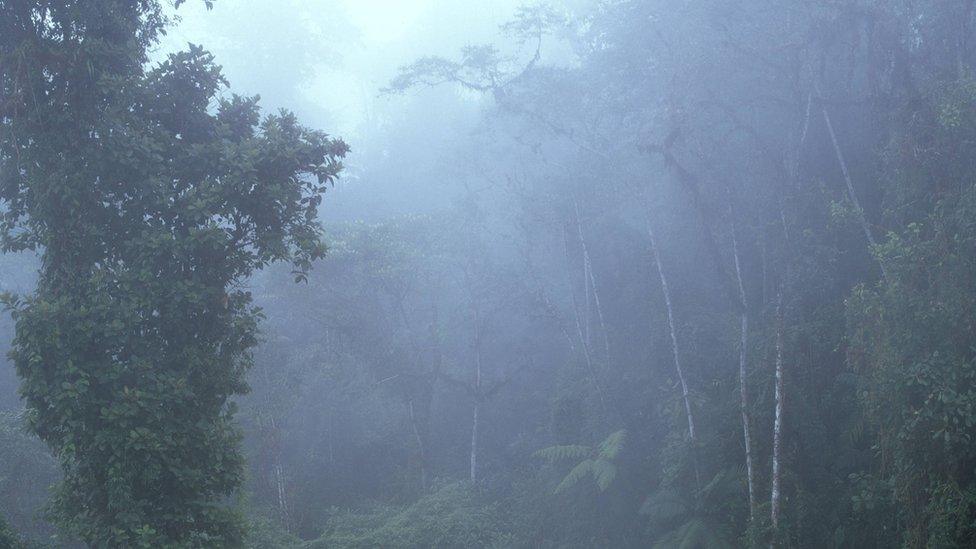
Ecuador's "cloud forest" grows in a narrow corridor on the slopes of the Andes
The arrival of European settlers in Ecuador had a profound effect on the country's population and environment.
This is according to new findings from The Open University.
Researchers studying soil cores from the Quijos valley found that they revealed a detailed story of the area's history after Spanish settlers arrived in the 1500s.
The subsequent decimation of the region's indigenous population is told by surprising historians - plants.
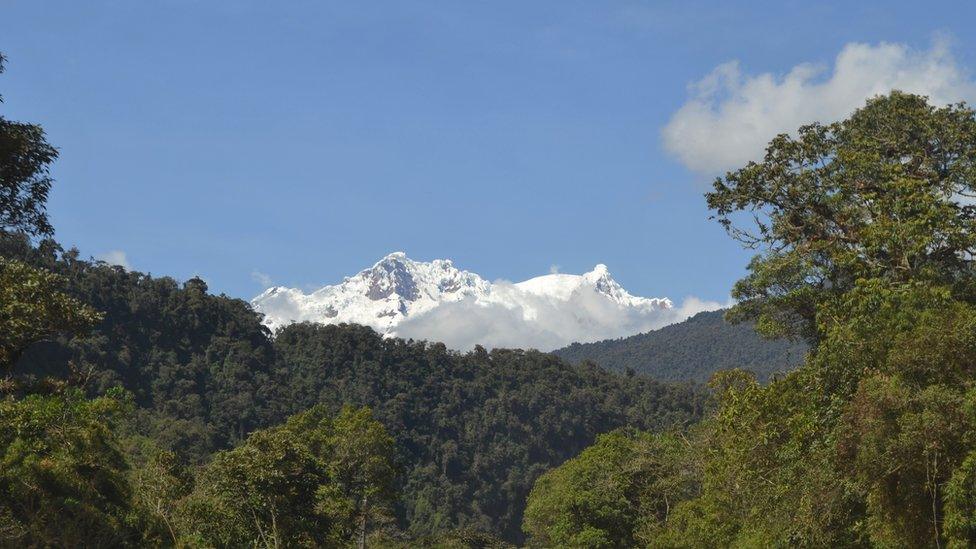
When two European tourists arrived in Ecuador's Quijos valley in the 1850s and 1860s, they described its landscape as dense, impenetrable and "unpeopled by the human race".
The region's cloud forest, a belt of growth which falls between the high altitude grasslands and tropical rainforest, runs along the flanks of the Andes mountains.
Yet records from Spanish settlers showed a population of over 30,000 Quijos peoples living in the area just 300 years previously.
Although its 19th century visitors regarded it as pristine, it had actually undergone profound changes in the wake of European colonisation.
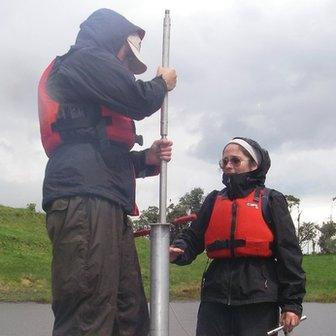
Researchers Nicholas Loughlin and Encarni Montoya took two soil cores from Lake Huila
Dr Nicolas Loughlin started his PhD at The Open University looking for evidence of changes to Ecuador's cloud forests at the end of the last ice age, about 10,000 years ago.
Taking soil cores from Lake Huila in the Quijos valley, he began to look for prehistoric pollen.
What he ended up finding was something much more recent.
He told BBC News: "I started looking at the pollen and the fungal spores and the charcoal [in the cores]. We started seeing these really interesting changes... and when we had them dated, we could link these very specific changes where you go from almost all forest-type pollen, to grass-type pollen, at a very specific point."
"We were able to link that to historic events; so the arrival of Europeans in the area, for instance, or the period of time that follows the indigenous depopulation of the region."
Using carbon dating techniques on the upper 50cm of the soil core, its pollen grains were able to give Dr Loughlin a detailed timeline for the events he could see in the soil.
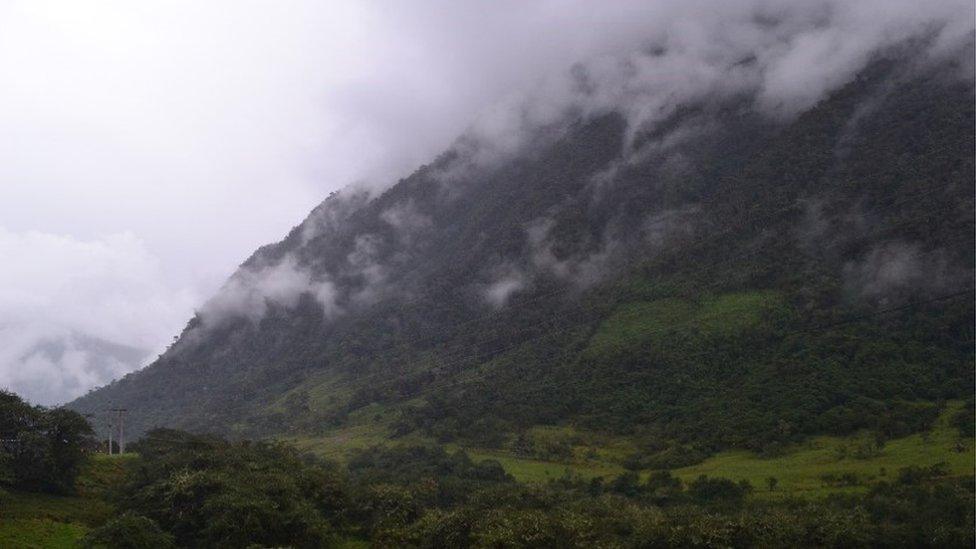
The Quijos valley today
Prior to the arrival of Europeans, the region had been widely farmed by Quijos peoples. Maize was cultivated and there was very little tree pollen to be found - the valley had been cleared for agriculture.
Once the Spanish arrived, things changed abruptly. A spike in charcoal in the soil sample coincided with historical records of an uprising against Spanish rule in the mid-16th century.
Afterwards, a sharp increase in grass pollen gave way to evidence of the forest slowly returning. Nature was reclaiming the valley, and the people who had inhabited it for at least 1,000 years were gone.
By the time the 19th century tourists wrote their accounts, the cloud forest had been repopulated by many of the same species that had occupied the area around 40,000 years earlier, before the first humans arrived in South America.
The nearby town of Baeza, previously home to about 11,000 inhabitants, was reduced to just a few families.
"So you went from something that was quite a large population centre to almost completely empty... there was certainly a massive depopulation of the indigenous peoples there," says Dr Loughlin.
"I still believe it's severely underestimated the impact that European colonisation had on the indigenous population," he added.
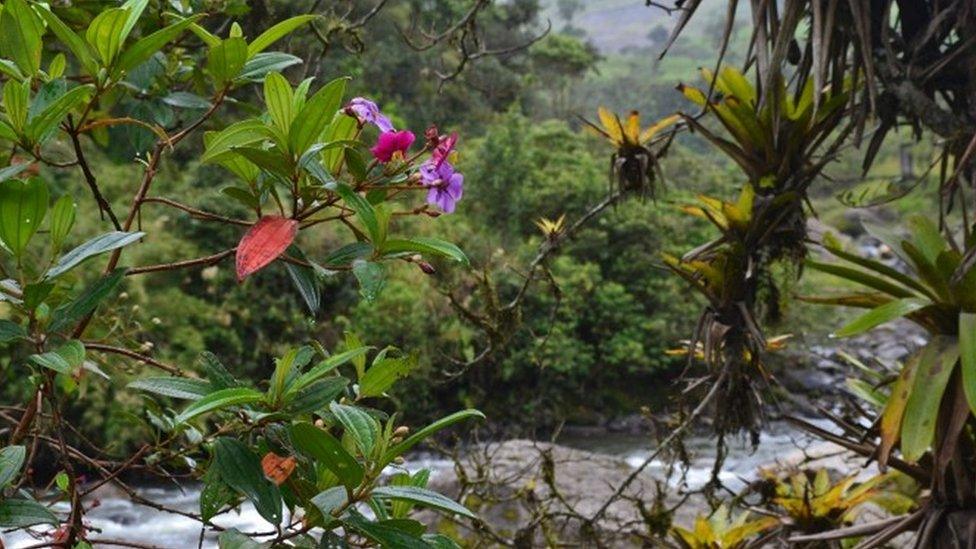
The Quijos valley is currently experiencing extensive deforestation for farming
Dolores Piperno, a senior scientist at the Smithsonian, who was not involved in the study, hailed it as "robust and much needed information" on how Quijos peoples transformed the Andean cloud forest through agriculture, "and the ecological consequences of the tragic decline of those populations following European contact".
Palaeoecology, this study of the plant record, can also be useful in restoration ecology projects, which Dr Loughlin sees as a collaborative process.
"It's unfortunate that not much long-term ecology has been done to monitor how these forests recover," he told BBC News.
In the future, he is looking to work closely with the peoples currently living in the region "to see if we can establish targets for restoring these forests."
"I'm interested in linking palaeoecology and these old records with what can be done now and in the future."
The study results are published in Nature Ecology & Evolution, external.